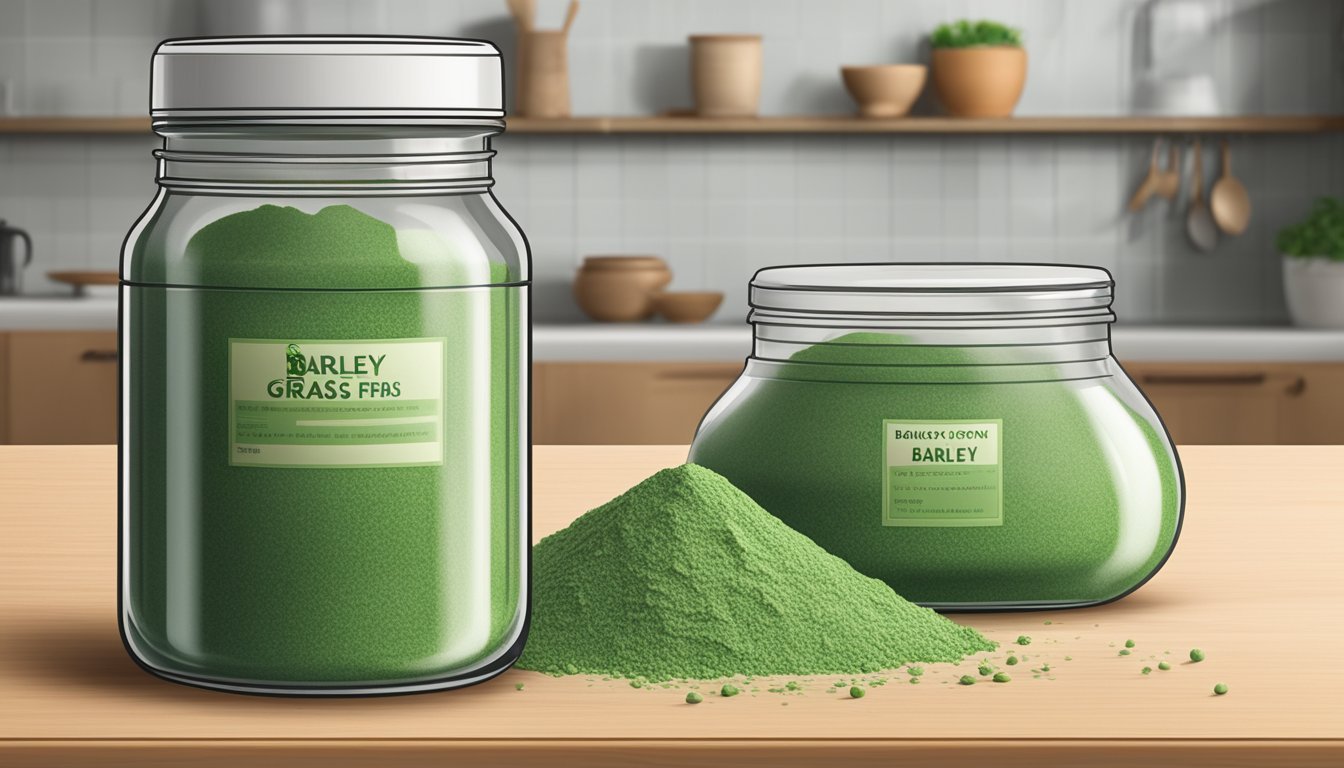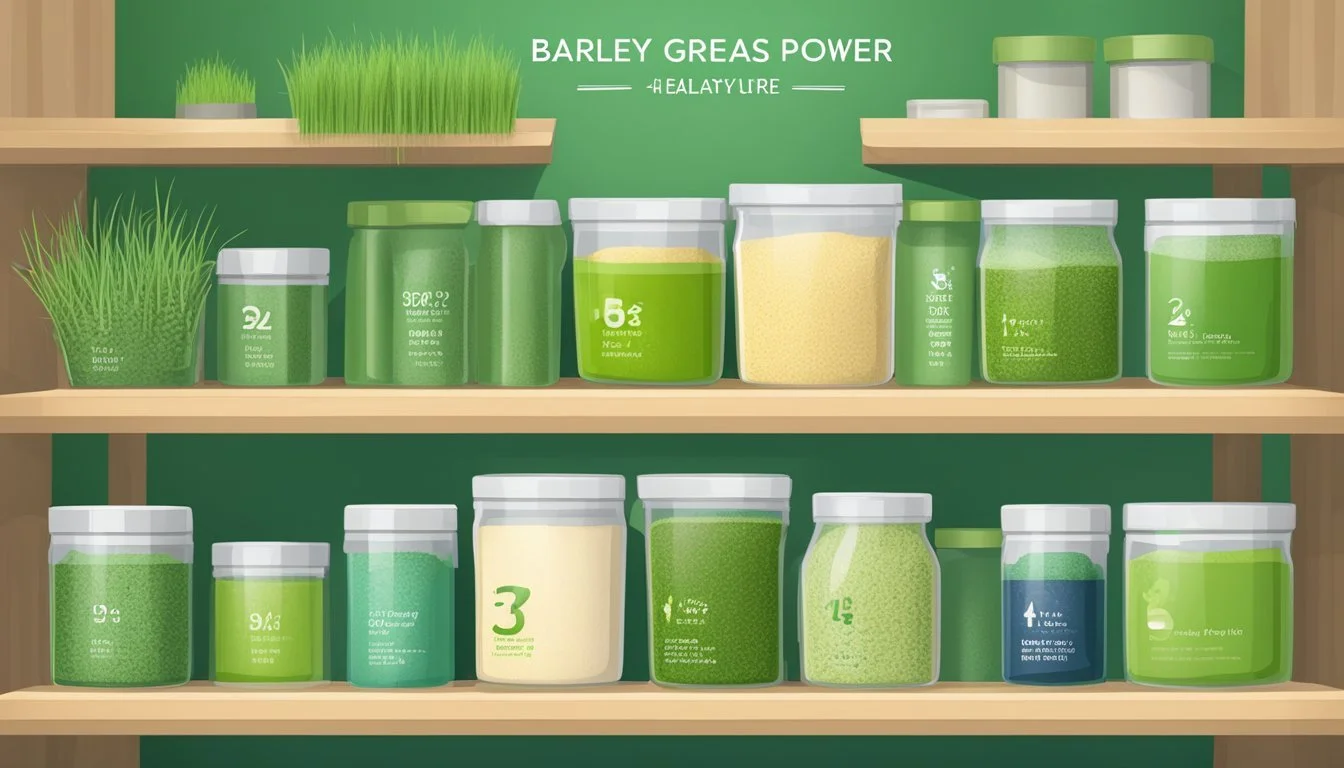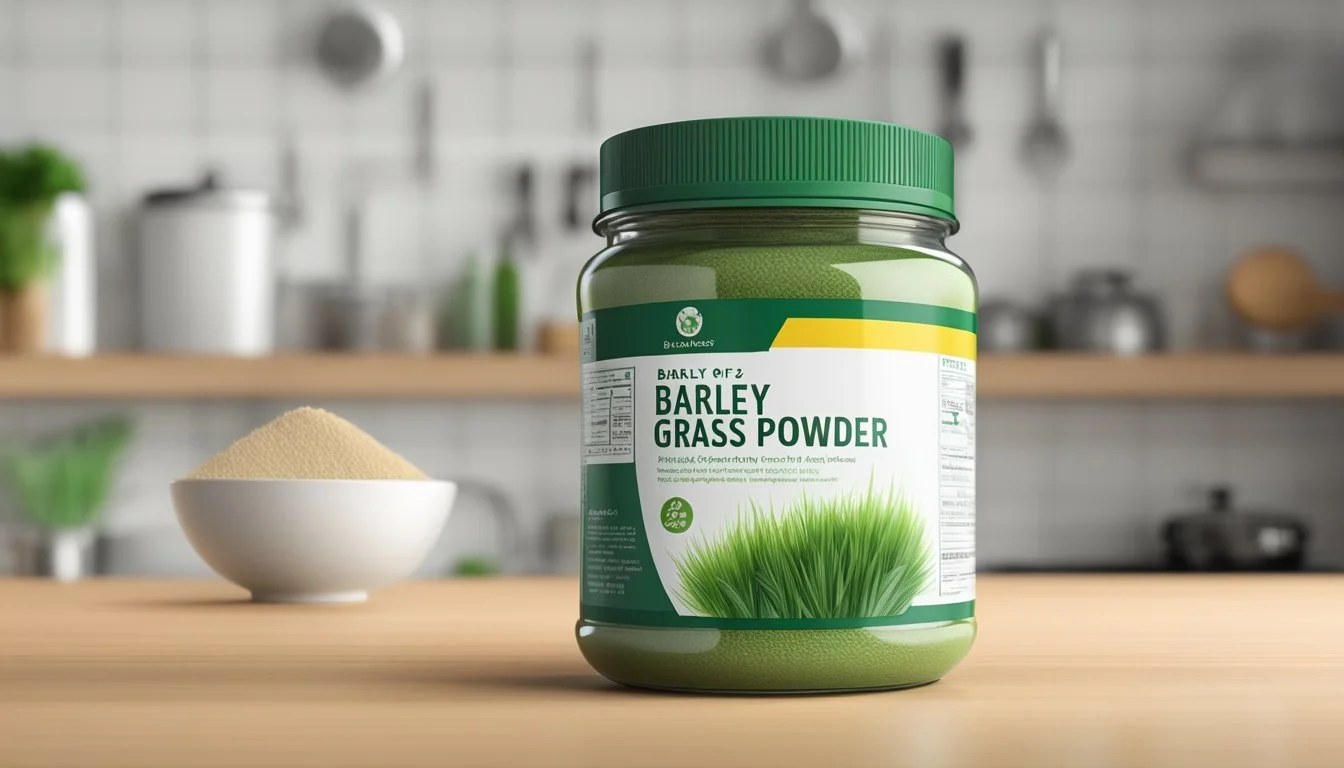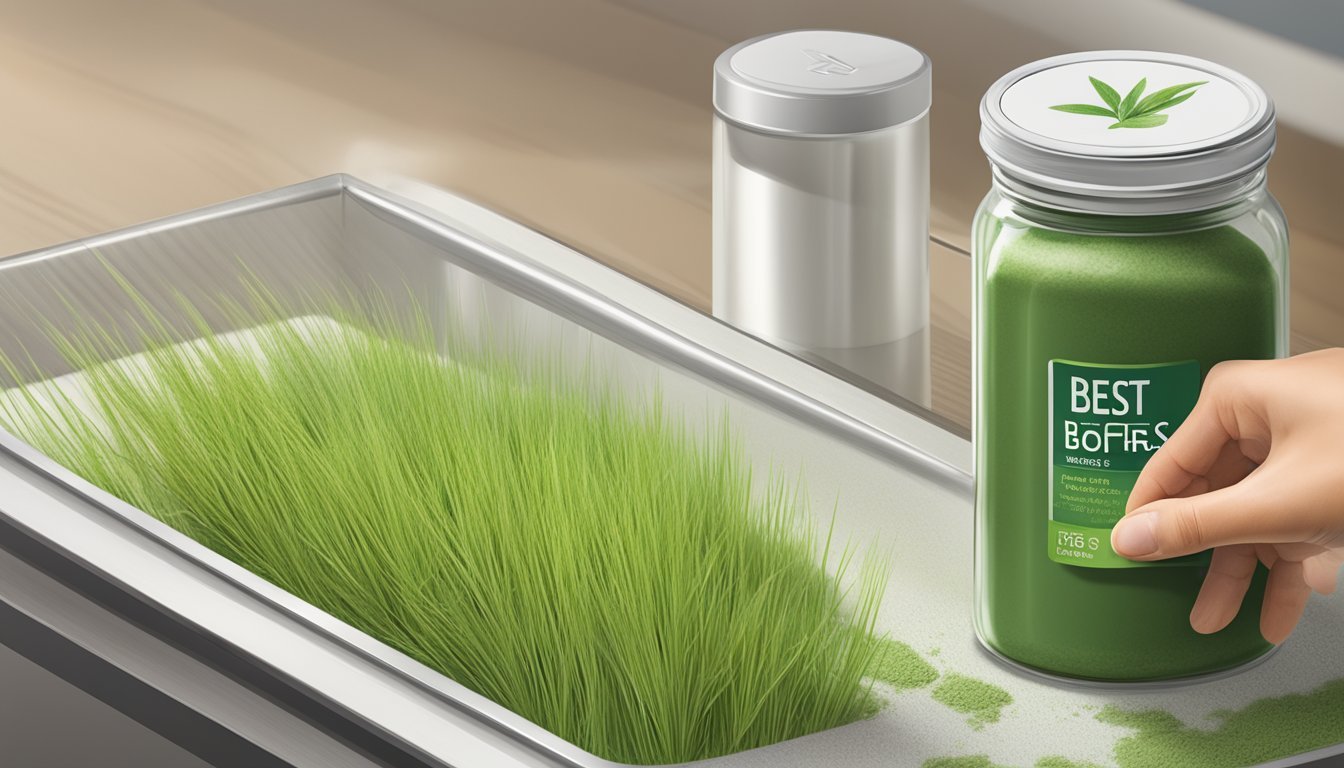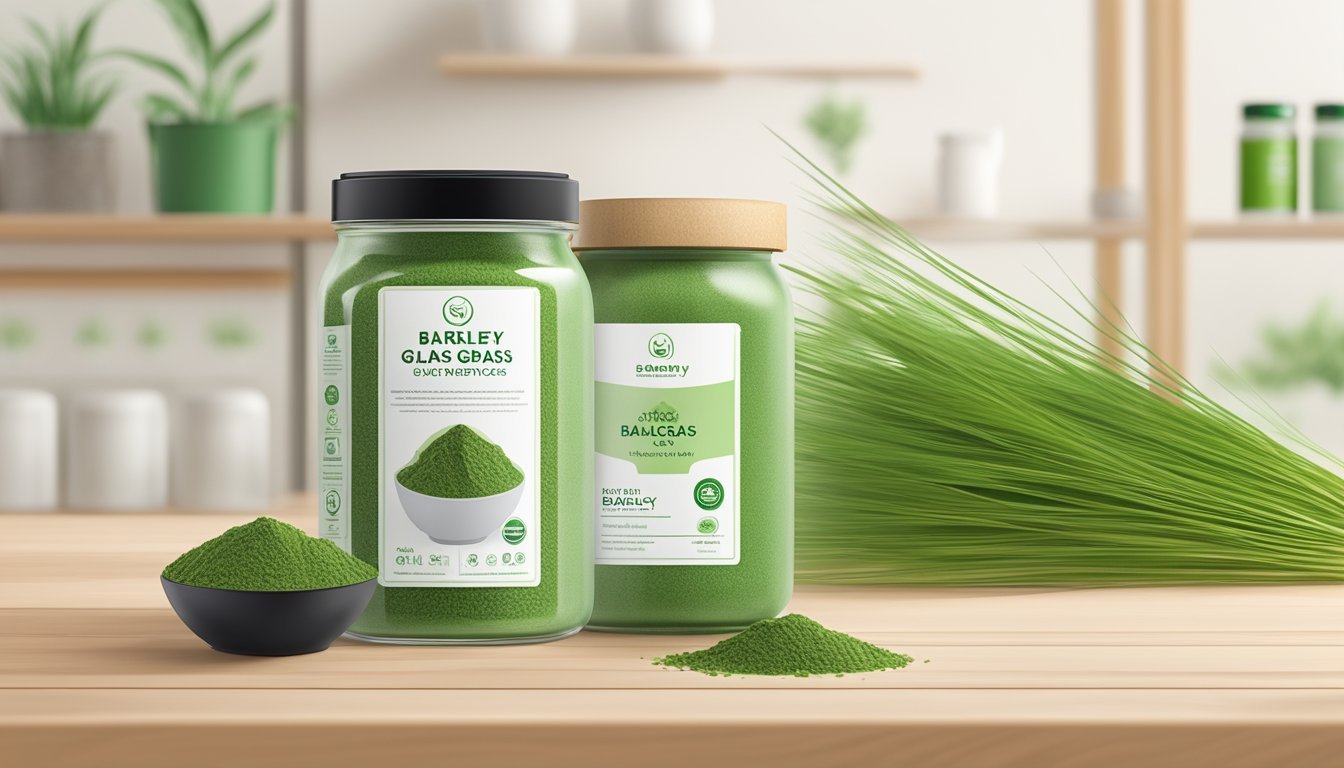How Long Does Barley Grass Powder Last?
Shelf Life and Storage Tips
Barley grass powder is a product derived from the young leaves of the barley plant, and it boasts a diverse range of nutritional benefits. Its longevity is subject to proper storage conditions. When kept in an airtight container in a cool and dry place, barley grass powder can maintain its quality for an impressive amount of time. This shelf life can span from 1 to 2 years, making it a convenient ingredient for those looking to incorporate its health benefits into their diet over an extended period.
The stability of barley grass powder is critical for preserving its nutritional content, including vitamins, minerals, and antioxidants, which contribute to its health-promoting properties. Factors such as exposure to moisture, air, and temperature fluctuations can significantly impact the quality and shelf life of the powder. Consumers seeking to maximize the longevity of their barley grass powder should pay careful attention to storage practices to ensure they derive the full range of benefits offered by this healthful supplement.
Understanding Barley Grass Powder
Barley grass powder is a nutrient-rich supplement that has garnered recognition in the health and wellness community. Its concentrated source of vitamins, minerals, antioxidants, and other essential nutrients make it a popular choice for enhancing diets.
Nutritional Profile
Barley grass powder is densely packed with a wide spectrum of vitamins such as vitamin C, vitamin A in the form of beta-carotene, and B-vitamins. It also contains valuable minerals including iron, calcium, magnesium, and potassium. The presence of essential amino acids contributes to its high protein content, while fiber is abundant, facilitating digestive health.
Vitamins: C, A (beta-carotene), B-vitamins
Minerals: Iron, Calcium, Magnesium, Potassium
Protein: Essential amino acids
Fiber: Supports digestive health
Health Benefits
Due to its rich composition, barley grass powder has several potential health benefits. It has been shown to support cardiovascular health by aiding in reducing cholesterol levels. The antioxidants in barley grass, such as superoxide dismutase, can help combat oxidative stress and may contribute to lowering the risk of chronic diseases. Its blood sugar regulatory properties are noteworthy, especially for individuals managing type 2 diabetes.
Cardiovascular support: May lower cholesterol levels
Antioxidant activity: Reduces oxidative stress
Blood sugar regulation: Assists in managing diabetes
Barley Grass as a Superfood
Barley grass powder is often designated as a superfood due to its condensed nutrition and health benefits. The term superfood is attributed to foods that offer maximum nutritional benefits with minimal calories. They are typically laden with vitamins, minerals, and antioxidants. As such, barley grass powder is a favorable addition to various diets seeking a nutrition boost, including those looking to optimize their health through natural, plant-based sources.
Superfood qualities: Nutrient-dense, low in calories
Diet addition: Versatile for shakes, smoothies, and recipes
Plant-based nutrition: Ideal for health-conscious individuals
Storage Fundamentals
Ensuring barley grass powder retains its quality over time revolves around appropriate storage methods. This section outlines the crucial storage principles to maintain the powder’s integrity.
Ideal Storage Conditions
Barley grass powder thrives in a cool, dry environment away from direct sunlight. The powder's longevity is optimal when these conditions are maintained because they protect against degradation and the loss of nutritional value. An ideal storage strategy involves keeping the powder in a pantry or a cupboard at room temperature, typically ranging from 68°F to 77°F (20°C to 25°C).
Impact of Temperature and Moisture
Temperature and moisture are two pivotal factors that can influence the shelf life of barley grass powder. Exposure to high temperatures can hasten the degradation of the powder, reducing its quality and nutrient content. Similarly, moisture may lead to clumping and potential microbial growth. Storage in a refrigerator can be considered if room temperature is not sufficiently stable or if greater longevity is desired, but one should be wary of condensation that could introduce moisture when removing the powder from a colder environment.
Container Recommendations
The choice of container for storing barley grass powder is vital in preserving its freshness:
Airtight Container: It should be sealed to prevent moisture and air from entering.
Opaque Material: If possible, a container that shields the powder from light to avoid nutrient degradation.
Using containers such as thick plastic bags with zipper seals or glass jars with tight-fitting lids can significantly extend the shelf life. If there is access to a freezer, storing the powder in an airtight container within it can further prolong its potency, although it's less common to freeze the powder as it's typically consumed within a reasonable period when stored at room temperature.
Maximizing Shelf Life
When storing barley grass powder, it is crucial to maintain optimal conditions to prevent spoilage and ensure safety. Understanding the signs of spoilage, knowing when it's safe to consume, and implementing methods to extend its freshness can significantly maximize its shelf life.
Signs of Spoilage
Barley grass powder is sensitive to environmental factors. Users must watch for changes in color, which should remain a vibrant green. Any discoloration or the presence of mold growth indicates spoilage. A musty or off smell is another clear sign that the barley grass powder is no longer safe for consumption. Users should also feel the powder for its texture, which should remain fine and powdery, not clumpy or coarse, to ensure quality.
Safe Consumption Tips
For safety, one should always inspect barley grass powder before use. A fresh, grassy smell without any sour or off odors is ideal. If a user detects any mold, they must discard the entire product to avoid the risks of contamination. Consuming spoiled barley grass powder can lead to health issues, and as such, discarding any questionable product is essential for safety.
Extending Freshness
To prolong the shelf life and maintain the freshness of barley grass powder, it should be stored in an airtight container in a cool, dry place, away from direct sunlight and moisture. Here are some specific storage guidelines:
Temperature: Below 70°F (21°C) to prevent humidity affecting the product.
Light Exposure: Store in darkness to avoid degradation of nutrients.
Moisture: Keep away from water sources to prevent clumping and mold.
Seal: Use containers with a tight-fitting lid to keep out oxygen and pests.
Refrigeration: Optional, but can further extend shelf life.
Enjoy the convenience of doorstep delivery when you buy airtight containers online!
Barley Grass Powder Uses and Preparation
Barley grass powder offers a versatile application in food preparation, ranging from drinks to cooking recipes, due to its nutritional content. The powder can be easily incorporated into daily meals and beverages for an added health boost.
In Beverages
Smoothies and Juices: A popular method is to blend barley grass powder into smoothies and juices. It commonly appears in:
Fruit and vegetable smoothies: 1 to 2 teaspoons
Green teas: 1/2 to 1 teaspoon
Integrating barley grass powder into these beverages not only enhances the nutrient profile but also adds a vibrant green hue.
Cooking with Barley Grass Powder
When cooking, barley grass powder can be a nutritious supplement. It often finds its way into:
Soups and stews: Incorporate 1 teaspoon for extra nutrients.
Baked goods: Add 1 to 2 tablespoons to recipes for muffins, bread, or energy bites.
This approach maintains most of the grain's nutritional integrity, even after being heated.
Alternative Uses
In addition to traditional cooking and beverages, barley grass powder has alternative applications:
Vinaigrettes: Mix a pinch of barley grass powder into salad dressings.
Hummus: Stir in a small amount for added nutrition and color.
These uses reinforce the powder's versatility beyond just being a health supplement.
Health Considerations
When considering the incorporation of barley grass powder into one's diet, it is pivotal to understand the implications it may have on health, including its compatibility with dietary restrictions, potential health risks, and the positive health effects it can offer.
Dietary Restrictions and Allergies
Individuals should be aware that barley grass is generally gluten-free, but caution is advised as it might be processed in facilities that handle wheat products. This poses a risk for cross-contamination and might not be suitable for those with celiac disease or gluten intolerances. As with any dietary supplement, checking labels for allergen information is crucial to ensure that the product aligns with any dietary restrictions.
Potential Health Risks
While barley grass powder is often considered beneficial, there are potential risks involved. Overconsumption may lead to an imbalance in the body's nutrient levels, and for those with sensitivities, it could trigger allergic reactions manifested as skin rashes or respiratory issues. Those on medication, especially for blood sugar levels or cholesterol management, should consult with their healthcare provider to prevent adverse interactions.
Positive Health Impacts
Barley grass powder carries with it a multitude of health benefits. It is known to be rich in fiber, which aids in digestion and alleviates issues like constipation. The presence of key vitamins and trace minerals may contribute to robust immune function and can play a role in skin health. Additionally, certain components in barley grass have been observed to assist in detoxification processes and may have a positive effect on heart health by maintaining healthy cholesterol levels and supporting blood sugar regulation, thus offering potential benefits for individuals with diabetes. The anti-inflammatory properties of barley grass may also contribute to reducing overall inflammation in the body.
Barley grass powder is not a miracle cure, but its inclusion in a diet, under the right conditions with moderation and proper consultation, can be an advantageous choice for many seeking to enhance their daily nutrient intake.
Simplify your life with the convenience of ordering barley grass powder online in just moments.
Comparing Barley Grass to Other Grains
When assessing barley grass and its comparison to other grains, one should consider nutritional content, dietary usage, and suitability for different diet plans. These factors influence both the consumption of grains and their adaptability as food ingredients.
Nutritional Comparison
Barley grass offers a robust nutritional profile, distinct from whole grains with its concentration of vitamins, minerals, and enzymes. Barley grass powder is rich in:
Vitamin A
Proteins
Fibers
Whole grains like wheat typically contain higher amounts of insoluble fiber, which aids in digestion, while barley grass contains soluble fiber that contributes to heart health. Moreover, barley grass offers a higher concentration of certain nutrients on a per gram basis compared to its mature, whole grain state. Barley, when cooked, becomes a rich source of fiber and nutrients, whereas barley grass is often consumed uncooked in powdered form to maintain its nutritional integrity.
Usage in Diets and Cuisine
Barley grass is versatile; it is commonly incorporated into diets as a superfood supplement, typically added to smoothies, juices, or as a topping for various dishes. In contrast, whole grain barley is used extensively in a variety of culinary applications, including soups, stews, salads, and as a rice substitute in dishes.
In terms of cuisine, cooked barley adds a chewy texture and nutty flavor to meals, whereas barley grass has a more neutral to mild grassy taste, making it a suitable addition to beverage-oriented diets without significantly altering flavor profiles.
Alternatives for Specific Diets
For those seeking gluten-free options, barley grass, when harvested correctly to avoid contamination with gluten-containing grains, can serve as a safe alternative. However, those with celiac disease or severe gluten intolerance should proceed with caution and ensure the barley grass is certified gluten-free.
Barley grass often stands as a substitute for other green superfoods like wheatgrass in dietary plans, due to its similar nutritional attributes and ease of digestion. It is important for consumers to note whether barley grass is appropriate for their specific diet, especially in cases where the diet restricts or prohibits the presence of gluten.
Product Selection and Quality Indicators
When selecting barley grass powder, it is crucial to consider the labeling for nutritional information, the product's physical qualities, and the reputability of the source. These factors contribute to the overall quality, nutritional content, and potential health benefits of the product.
Labeling and Nutritional Information
Nutritional Content: Consumers should examine the product label for detailed nutritional information. High-quality barley grass powder typically contains a rich profile of vitamins, minerals, and antioxidants. It should also provide specific levels of essential nutrients and enzymes known to support health.
Superfood Designation: The label might boast of "superfood" qualities, emphasizing the powder’s high antioxidant properties. Buyers are advised to seek out products that reference specific superfood benefits, such as aiding in detoxification or improving immune responses.
Assessing Physical Qualities
Color and Texture: A fresh and high-quality barley grass powder should have a vibrant green color, an indication of its chlorophyll content and freshness. The texture ought to be fine and uniform, which suggests proper processing and purity of the product.
Taste and Odor: Quality barley grass powder is characterized by a slightly bitter yet fresh taste and a grassy odor. An off-putting smell or abnormal taste can indicate spoilage or poor manufacturing processes.
Choosing High-Quality Sources
Reputable Manufacturers: It is advisable to purchase from reputable manufacturers known for strict quality control and good manufacturing practices. Suppliers should be transparent about their sourcing and processing methods.
Heat and Storage: High-quality providers typically utilize low-heat techniques to preserve the delicate enzymes in barley grass powder. Furthermore, they should offer guidance on proper storage to retain the powder's nutritional profile and quality, such as suggesting to keep the product in cool, dry conditions away from direct sunlight.
Environmental and Ethical Considerations
When considering the shelf life of barley grass powder, it is imperative to examine the environmental and ethical implications of its production and packaging. Not only does this affect the quality and longevity of the product, but it also impacts the collective well-being of the ecosystem and society.
Sustainable Farming Practices
The cultivation of Hordeum vulgare, the plant from which barley grass is derived, necessitates sustainable farming techniques to ensure minimal ecological disruption and soil degradation. Producers who employ crop rotation and organic farming enhance soil fertility, benefiting both the grain’s nutritional value and the environment.
Crop Rotation: Aids in pest management and preserves soil health.
Organic Farming: Avoids harmful pesticides, promoting biodiversity.
Packaging and Waste Reduction
The packaging of barley grass powder plays a significant role in its environmental impact. Eco-friendly packaging solutions not only extend the superfood's shelf life but also contribute to waste reduction. Brands are increasingly using:
Biodegradable Materials: Such as plant-based plastics or recycled paper.
Reusable Containers: Encouraging consumers to reduce waste.
Supporting Ethical Brands
Consumers are urged to support brands that prioritize fair labor practices and community engagement, ensuring that the wellness and health benefits of barley grass do not come at the cost of exploitative labor. Ethical brands demonstrate a commitment to:
Fair Trade Certifications: Ensuring fair wages and conditions for farmers.
Community Initiatives: Contributing to local development projects.
By integrating these environmental and ethical considerations, consumers can make informed choices that bolster personal nutrition and promote overall wellness, while also supporting sustainable and ethical practices within the barley grass industry.
Frequently Asked Questions
This section addresses the shelf life and proper storage of barley grass powder, expert storage recommendations, and common misconceptions.
Common Concerns
Consumers frequently inquire about the longevity of barley grass powder and how to maintain its nutritional value. Barley grass powder, when stored correctly, can last two to three years. It is imperative to store the powder in a cool, dry place away from moisture and direct sunlight to preserve its rich content of vitamins, such as vitamin A, C, and K, and minerals, including potassium, iron, magnesium, and calcium. These nutrients contribute to various health benefits like supporting the immune system and maintaining healthy skin.
Expert Recommendations
Specialists recommend storing barley grass powder in an airtight container to prevent exposure to air and moisture, which can accelerate degradation. Refrigeration is not necessary but can extend the freshness of the powder. Freezing the powder is typically not advised, as it can cause condensation upon thawing, leading to clumping and possible nutrient loss.
Misconceptions
A common misconception is that barley grass powder loses its nutritional value soon after opening, but it retains most of its nutrients if stored properly. It does not contain significant amounts of calories or fat, and while it can be part of a healthy diet for weight loss, it is not a magic solution. Unlike some fruits and vegetables, barley grass powder does not attract insects easily, provided it is kept in an airtight container. The expiration date should be checked to ensure maximum freshness and efficacy; however, the actual shelf life may exceed this date if storage conditions are optimal.
Conclusion
The shelf life of barley grass powder primarily depends on storage conditions. Stored in a cool, dry place and in an airtight container, barley grass powder can typically last for six months to two years. Factors such as exposure to heat, light, and moisture can significantly reduce its potency and shelf life.
To maximize longevity:
Store in a cool, dry place
Keep in an airtight container
Avoid exposure to direct sunlight
Signs of spoilage include:
Discoloration
Off smells
Clumping due to moisture
If one notices such changes, it is advisable to dispose of the product to ensure safety and quality. Always check the expiration date on the packaging for the most accurate assessment of a product's shelf life. Consumers should check for any specific storage instructions from the manufacturer to optimize freshness.


